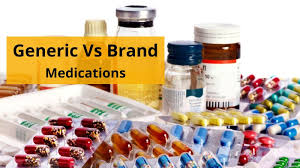Generic vs Brands: Media Hype and Facts IV – Blog Post #477 by Asrar Qureshi
Generic vs Brands: Media Hype and Facts IV – Blog Post #477 by Asrar Qureshi
Dear Colleagues! This is Pharma Veterans Blog Post #477. Pharma Veterans welcomes sharing of knowledge and wisdom by Veterans for the benefit of Community at large. Pharma Veterans Blog is published by Asrar Qureshi on WordPress, the top blog site. Please email to asrar@asrarqureshi.com for publishing your contributions here.
Continued from Previous……
Going in sequence, we move on to look at arguments for and against generics.
Here are some arguments in favor of using generic names for prescriptions.
Ease of Use
The number of ‘brands’ registered at DRAP has crossed over 110,000. For each formula/composition, numerous brands are available. For some common products such as antibiotics, pain medicines, gastrointestinal drugs, the number of brands for each one crosses 200 may be. This makes it simply impossible for any physician to remember so many brand names. Practically, doctors prefer to remember few brands and prescribe the same to their patients again and again. [This is one reason why established brands keep getting bigger, as reported earlier]. Prescribing by generic name would make life easy for the physician. They can simply write the generic name and leave it to the pharmacy and patient to choose the brand.
When I started working, it was the era of generic policy. All prescriptions were issued by generic names and we used to request the doctors to write company name in bracket in front of the generic name. This was done to ensure that the patient would get our product. No brand name was mentioned on any pack, even on combinations. For example, present day (and prior) Surbex T and Stresstabs and Polybion C were all ‘B-Complex C’.
The generic policy of 1973 did not last long and was replaced by brands in 1976.
Generic prescriptions, wherever in vogue, counter the brand power. More than one generic version is available to choose from and the pharmacist usually chooses it for the patient. Brands remain available and may still be prescribed in some cases. However, it is mostly generic prescription with the onus on the pharmacist to choose. If the patient is well aware or had been taking brand before the generic became available, he can choose to buy brand, which will be costlier compared to generic version.
In the developed countries, innovator brands rule alone for several years, before the patent goes out and generics are allowed on the market. During this rather long period which may be anywhere between 12-27 years, depending upon how much cost and effort went into innovation, a very large number of patients get familiar with the brand. This phenomenon is more common with long term medications such as for diabetes, heart, blood pressure, psychiatry, neurology etc. When the generic versions become available, they are invariably preferred for less price. There are online pharmacies which claim to sell at even lower prices.
The availability of generic versions seriously challenges the brand power.
Economy
There is no denying the fact that the single most important reason for the popularity of generics is economy. The patients may have to pay half or even less as compared to the brand. This is extremely significant for patients who have to take some medicines lifelong. This is also significant for the healthcare systems in developed countries where savings through generic prescriptions amount to millions of dollars.
In Pakistan, where national health system or health insurance does not exist for common public, the cost of treatment is sometime critical to the extent that it may mean getting or not getting the treatment. Pakistan pharma scene is peculiar thanks to inconsistent policies of ministry of health and DRAP. Even the generics (branded generics) function like brands in practice. The economy is still there but it varies from one ‘brand’ of generic to another.
Wooing of Prescribers
In recent times, general public has become more aware that the prescription of drugs is influenced by the pharma companies through various practices aimed at wooing the customers. In a way, the branded generics have the problem that they may not be able to offer tangible difference from other similar products. This has led to the emergence of marketing practices to influence the prescription of brands through any means. Since we are largely an uncontrolled bunch, we are always likely to cross and go beyond the lines of decency, morality and ethics.
The beginning of generic prescriptions may be able to counter the wooing practices presently used by pharma companies. This may be an intended outcome, though it would be easier said than done.
To be Continued…...
Disclaimer. Most pictures in these blogs are taken from Google Images which does not show anyone’s copyright claim. However, if any such claim is presented, we shall remove the image with suitable regrets.





Comments
Post a Comment